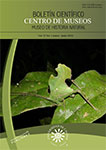Authors
Abstract
Objective: To determine the eff ects of supplementation with three tropical arboreal species (Guazuma ulmifolia, Gliricidia sepium y Tithonia diversifolia) on intake, in vivo and in vitro digestibility in hair sheep. Methodology: Th e experiment was carried out in “Las Brisas” farm of Universidad del Tolima, Colombia. Twelve hair sheep, with an average weight of 22.2±2.5 kg, received four treatments in a 4×4 Latin square design with three sheep per experimental unit were used. Th e treatments consisted of: T1 = 100% D. aristatum; T2 = 50% D. aristatum, 25% Guazuma ulmifolia and 25% rice bran; T3 = 50% D. aristatum, 25% Gliricidia sepium and 25% rice bran; and T4 = 50% D. aristatum, 25% Tithonia diversifolia, and 25% rice bran. To determine the intake and digestibility of nutrients, the method of total collection of feces was used. It was observed that the intake and digestibility of dry matter, organic matter, crude protein, fraction of B3 of the protein and fi ber in neutral detergent, increased in relation to the control group in the diets containing tree foliage (p<0,0001). Main results: Th ere were no diff erences for the dry matter intake (p> 0.05) between the treatments containing tropical arboreal species G. ulmifolia (T2), G. sepium (T3) and T. diversifolia (T4). However, diff erences were observed between all treatments (p <0.05) for nutrients digestibility. Conclusion: Th e supplementation of hair sheep with foliage of tropical arboreal species is an interesting alternative to improve the intake and digestibility of diets which can contribute to
the improvement of the productive indicators.
References
AOAC., 2000.- Official methods of analysis. 17th ed. Gaithersburg MD: Association of Official Analytical Chemists International.
ATANGANA, A., KHASA, D., CHANG, S. & DEGRANDE, A., 2014.- Phytoremediation in Tropical Agroforestry. (en) Tropical Agroforestry. Springer Netherlands.
ANIS, S.D., KALIGIS, D.A., TULUNG, B. & ARYANTO, A., 2016.- Leaf quality and yield of Gliricidia sepium (jacq) steud under different population density and cutting interval in coconut plantation. Journal of the Indonesian Tropical Animal Agriculture, 4(12): 91-98.
BEZERRA, G., GARCIA-DA SILVA, A., LEÃO, A., BATTISTON, C., LEAL, H. & ROSSI, R.C., 2010.- Desempenho, digestibilidade e balanço de nitrogênio em cordeiros alimentados com silagem de milho ou cana-de-açúcar e dois níveis de concentrado. Revista Brasileira de Zootecnia, 853-860.
CARVALHO, G.G.P., REBOUÇAS, R.A., CAMPOS, F.S., SANTOS, E., ARAÚJO, G., GOIS, G.C. & CIRNE, L.G.A., 2017.- Intake, digestibility, performance, and feeding behavior of lambs fed diets containing silages of different tropical forage species. Animal Feed Science and Technology, 2(28): 140-148.
FLORES, O.I., BOLIVAR, D.M., BOTERO, J.A. & IBRAHIM, M.A., 1998.- Parámetros nutricionales de algunas arbóreas leguminosas y no leguminosas con potencial forrajero para la suplementación de rumiantes en el trópico. Livestock Research for Rural Development, 10(1): 1-10.
FADIYIMU, A.A., ALOKANM, J.A. & FAJEMISIN, A.N., 2010.- Digestibility, Nitrogen balance and haematological profile of West African dwarf sheep fed dietary levels of Moringa oleifera as supplement to Panicum maximum. Journal of Animal Science, 6(10): 634-643.
GOERING, H.K. & VAN SOEST., P.J., 1970.- Forage fiber analyses (apparatus, reagents, procedures, and some applications). ARSUSDA, Washington, DC Agric.
GONZÁLEZ, J.C., VON-HESSBERG, C.H. & NARVÁEZ, W., 2014.- Características botánicas de Tithonia diversifolia (Asterales: Asteraceae) y su uso en la alimentación animal. Bol. Cient. Mus.Hist. Nat. U. de Caldas, 18(2): 45-58.
IÑIGUEZ, L., 2011.- The challenges of research and development of small ruminant production in dry areas. Small Ruminant Research, 9(81): 12-20.
KIKELOMO, A., 2014.- Voluntary feed intake and nutrient utilization of West African Dwarf sheep fed supplements of Moringa oleifera and Gliricidia sepium fodders. American Journal of Agriculture and Forestry, 2(3): 94-99.
LA, O., GONZÁLEZ, H., OROZCO, A., CASTILLO, Y., RUÍZ, O., ESTRADA, A. & CASTRO, B., 2012.- Composición química, degradabilidad ruminal in situ y digestibilidad in vitro de ecotipos de Tithonia diversifolia de interés para la alimentación de rumiantes. Revista Cubana de Ciencia Agrícola, 46(1).
LARA, P.E., CANCHÉ, M.C., MARRUFO, N.B. & SANGINÉS, J.R., 2007.- Pastoreo restringido de ovejas pelibuey en bancos de proteína de morera (Morus alba). Pastos y Forrajes, 3(02): 1-1.
LIU, J.X., YAO, J., YAN, B., YU, J. & SHI, Z.Q., 2001.- Effects of mulberry leaves to replace rapeseed meal on performance of sheep feeding on ammoniated rice straw diet. Small Ruminant Research, 3(92): 131-136.
MARTÍNEZ, M.R., LÓPEZ, O.S., ORTEGA, M.E., SORIANO, R., HERRERA, J.G., LÓPEZ, J. & ORTEGA, E., 2012.- Preference, consumption and weight gain of sheep supplemented with multinutritional blocks made with fodder tree leaves. Livestock Science, 14(91): 185-189.
MUPANGWA, J.F., NGONGONI, N.T., TOPPS, J.H. & HAMUDIKUWANDA, H., 2000.- Effect of supplementing basal diet of Woris gayana hay with one of three protein rich legume hays of cassia rotunda, Lablab purpureus and Macrophilium atropurpureus forage on some nutritional parameters in goats. Tropical animal health and production, 3(24): 245- 256.
RIVERA, J., ARENAS, F., CÓRDOBA, C., CUARTAS, C., NARANJO, J., MURGUEITIO, E. & BLANCO, C., 2012.- Degradabilidad in vitro de dietas ofrecidas en sistemas silvopastoriles intensivos y simulaciones de ganancias de peso en el Caribe seco colombiano. CATIE: 40-50.
SALAZAR, J.C., CARULLA, J.E. & VELÁSQUEZ, J.E., 2008.- Composición química y digestibilidad in vitro de algunas especies arbóreas establecidas en el piedemonte amazónico. Zootecnia Tropical, 26(3): 231-234.
SOTO, S., RODRÍGUEZ, J.C. & RUSSO, R., 2009.- Digestibilidad in vitro en forrajes tropicales a diferentes edades de rebrote. Tierra Tropical, 5(1): 9-15.
TILLEY, J. & TERRY, R., 1963.- A two-stage technique for the in vitro digestion of forage crops. Grass and forage science, 18(2): 104-111.
VAN SOEST, P.J., ROBERTSON, J.B. & LEWIS, B.A., 1991.- Methods for Dietary Fiber, Neutral Detergent Fiber, and Nonstarch Polysaccharides in Relation to Animal Nutrition. Journal of Dairy Science, 74(10): 3583-3597.

 PDF
PDF
 FLIP
FLIP






















